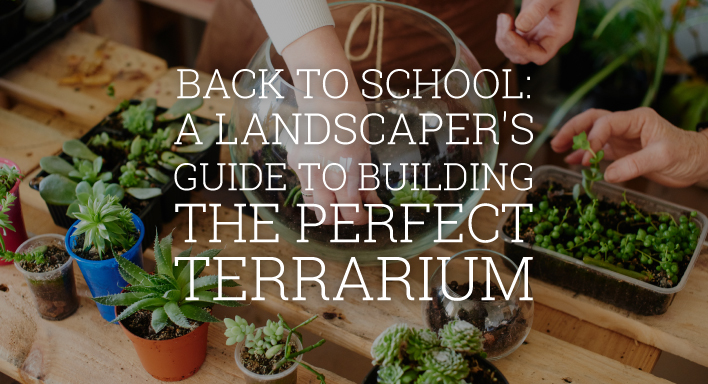
School is back in session! Little scientists are learning a lot this year, and building a terrarium is a fun way to engage your child at home. Whether it is a school project or just something you just want to undertake yourself, building a terrarium will teach your child how soil, plants, water, and air interact in a perfect environment.
The possibilities are endless when building your own terrarium, but two of the most popular types are jungle and desert themed. These contrasting environments can teach your child how plants thrive in two very different climates.
Jungle themed terrariums call for plants that thrive in humidity and won’t rot in wet conditions.
– Some kind of clear glass container. Fish tanks are recommended, but almost anything will do.
– Pea gravel or other pebbles for drainage
– Activated charcoal (you can get a bag of charcoal used for orchids)
– Very rich potting soil (like you get at the local garden shop) or compost from your yard, enough to cover the entire floor of the aquarium tank with 1 inch of soil
– A few tropical plants (can include plants such as peperomia, pilea, fern, nerve plant, selaginella, begonia, philodendron, and saxifrage, for examples.)
– Rain Water (tap water will do, but rain water has more nutrients for the plants)
1. Put the gravel and charcoal in the bottom of the container.
2. Now put the potting soil (or compost) in a layer of at least 1 inch on top of the gravel and charcoal.
3. Dampen the soil.
4. Plant the plants inside the container.
5. Spray 10 spritzes of water from a spray bottle into the terrarium.
6. Put the glass over the top. If you would like to, you can put clear tape around the edges to seal in the humidity.
7. Put your new terrarium in a warm, well-lit spot.
Avoid the urge to water too frequently: Misting your plants once a day provides needed humidity without flooding the container.
On the opposite end of the spectrum, desert terrariums call for plants that can withstand dry, hot temperatures, so the care instructions differ.
– Clear glass container
– Lava rock or river gravel for drainage
– Activated charcoal (you can get a bag of charcoal used for orchids)
– Succulent potting mix
– 2” succulents (try mammillaria, echeveria, sempervivum, portulacaria, crassula, kalanchoe, sedum, and haworthia).
– Sand (optional)
Desert plants are very low-maintenance. You only need to water every 10-14 days, remembering not to overwater.
Take notes and enjoy watching your child’s simulated environment thrive. To get all your questions answered about your Murfreesboro home’s real environment and the plants that live there, give us a call at All Summer Landscaping.